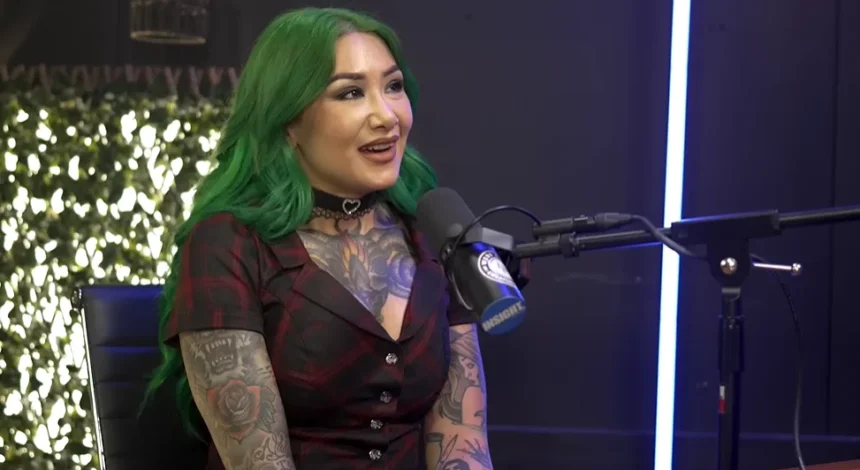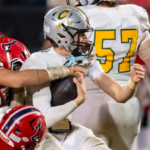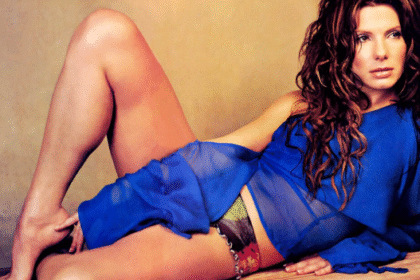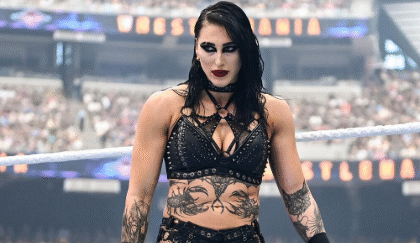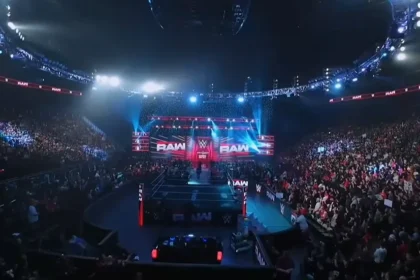A Quiet Injury, A Loud Courage
In a world where wrestling promos often shout victories, belts, and disdain, sometimes the true story is one whispered between gritted teeth. Shotzi Blackheart, known for her punk-rock style, expressive tattoos, and high-octane energy in the ring, recently revealed she’s been performing for three months with a broken arm. Wrestling News+1
- A Quiet Injury, A Loud Courage
- Who Is Shotzi Blackheart?
- The Injury: What We Know & What It Means
- Wrestling & Injury: Historical Context
- The Risks of Wrestling With a Broken Arm
- What This Tells Us: Grit, Identity & the Modern Wrestler
- Stats & Comparable Cases
- My Take: Admirable, But Concerning
- What’s Next & What To Watch
- Final Thoughts
That’s not a short time. Three months in wrestling can be six to ten matches, countless physical interactions, bumps, bumps into the mat, bumps in the audience run, powerbombs, suplexes, the whole dance. To do that with a broken bone changes everything.
Who Is Shotzi Blackheart?
To understand how serious this is, you need to know the performer behind the mask:
-
Real name: Charlotte “Shotzi” Blackheart (née Laurén Hough)
-
WWE career: Since 2019, rising from NXT into the main roster (Raw/SmackDown). Known for her charisma, aerial flair, daredevil entrances (like driving a tank into the ring), and being both fun and feisty.
-
Style: A blend of technical, high-impact, and character work. She’s not just about flash; she’s about making every move count, storytelling, and letting the audience feel vulnerability.
So when someone with that physical style breaks a bone and keeps wrestling, it’s not just perseverance: it’s a recalibration of every move they make.
The Injury: What We Know & What It Means
-
Duration: Three months with a broken arm.
-
When/How it was revealed: She publicly disclosed it in recent weeks (via interviews or socials) that she’s been managing pain, adapting, but pushing through.
-
Medical outlook: Early doctors reportedly advised her to rest, which is a standard recommendation. Broken arms typically require immobilization, physical therapy, and time to heal, especially in individuals whose work involves activities such as throwing, lifting, falling, and hitting.
But Shotzi continued anyway. That decision has risks: worsening injury, delayed healing, and potential for chronic issues.
Wrestling & Injury: Historical Context
Wrestlers performing with injuries is not new. Some famous examples:
-
“Macho Man” Randy Savage reportedly wrestled for periods with knees, hips, or other structural injuries.
-
Mick Foley has legendary status for wrestling through broken bones, teeth knocked out, etc.
-
Edge once wrestled with a torn triceps and other serious injuries before eventually needing surgery.
These injuries are part of wrestling lore, the sacrifices behind the spectacle. But each time, the physical cost was high, sometimes shortening careers or leading to long-term health issues.
The Risks of Wrestling With a Broken Arm
Competing with a broken arm isn’t just about pain; it’s about danger:
-
Re-injury: Every bump, punch, or throw risks making the break worse, possibly turning a clean fracture into a compound break or misaligned healing.
-
Compensation injuries: To protect the broken arm, wrestlers often shift weight or rely more on the uninjured side, which can cause strains, tears, or overuse injuries elsewhere (back, shoulder, wrist).
-
Performance limitations: Moves involving lifts or holds with both arms become riskier. Power moves, submission holds, or anything where she might be grasping or caught with both hands are hazard zones.
-
Pain & mental toll: Constant pain, potential for sleep loss, mental strain, anxiety about making a mistake or injuring someone else accidentally.
Shotzi’s decision shows not just toughness, but calculated risk, balancing performance demands with her health.
What This Tells Us: Grit, Identity & the Modern Wrestler
Shotzi’s case reflects several broader threads in today’s wrestling:
-
Expectations of toughness: Fans often idolize those who “push through”, even when injured. But that can create pressure internal and external, for wrestlers to hide pain.
-
Wrestler health & wellness evolving: WWE (and other promotions) have improved medical protocols over the decades. But injury disclosure is still selective; performers sometimes disclose injuries only when they interfere with matches, or when fans or the news force it out.
-
Identity & authenticity: Shotzi’s style is very “realness” driven. Her look, her promos, her persona lean into being gritty, human. Revealing vulnerability (an injury, pain) is consistent with her character, which may help fan empathy and credibility.
-
Career implications: Wrestling for months injured could increase her toughness and stock in fan eyes if she comes out strong. But if the injury worsens or healing is incomplete, it could impact long-term performance.
Stats & Comparable Cases
While we don’t have specific medical stats about her break (type of fracture, arm: left/right, location), we can look to related data and known wrestler injury cases:
-
Average fracture healing time for long bones (e.g. radius/ulna) is ~6-8 weeks for simple breaks; more complicated breaks double or triple that.
-
Wrestlers like AJ Styles have competed with torn ligaments or partial fractures, modifying their move sets.
-
High-profile cases: Daniel Bryan had serious neck injuries, but he wasn’t wrestling with unhealed broken arms for months. Wrestlers often take time off, get surgery, and rehab.
Shotzi’s wrestling continuously with an arm break for three months is thus relatively extreme in modern wrestling (at least among name talents where medical oversight is greater).
My Take: Admirable, But Concerning
I admire Shotzi Blackheart’s drive. The courage to step into that ring knowing you’re injured, knowing the limelight doesn’t wait, speaks to her professionalism and love for the art.
But part of me worries. Wrestling is unforgiving. The broken arm might be “manageable” now, but will this decision cost her later? Might there be chronic pain, reduced mobility, or lasting weakness?
Also, how much choice did she feel she had? Wrestlers often worry about losing momentum, audience attention, or storyline opportunities if they pause. That pressure, real or perceived, can push people to fight through injuries even when rest is medically wiser.
What’s Next & What To Watch
-
Recovery plan: Will Shotzi take time off soon? Or will she continue, risking further damage? The sooner she gets imaging, evaluation, physical therapy, and possibly surgery, the better her long-term outcome.
-
Modifications in style: Likely, some moves will change. Less arm involvement: fewer arm drags, holds; more moves that can be done safely. She might lean more on leg work, aerial stuff less dependent on arm strength, or tag matches rather than solo heavy work.
-
Fan reactions & character arc: Revealing this kind of vulnerability can deepen fan connection. She could build a narrative around overcoming pain, resilience. That can lead to stronger matchups or storylines.
-
Industry conversations: This might also add to ongoing discussions in wrestling over performer safety, insurance, medical transparency, and mental health.
Final Thoughts
Shotzi Blackheart wrestling for three months with a broken arm is a potent example of what’s both beautiful and brutal about professional wrestling. The beauty lies in the performer’s dedication, art, and sacrifice. The brutality lies in the physical toll, risk, and the hidden stories behind the flash.
She’s not the first to do something like this; she won’t be the last. But every time it happens, it’s a reminder: beneath every high-flying, screaming crowd, behind every muscle and costume, there’s a human being risking everything in that squared circle.

